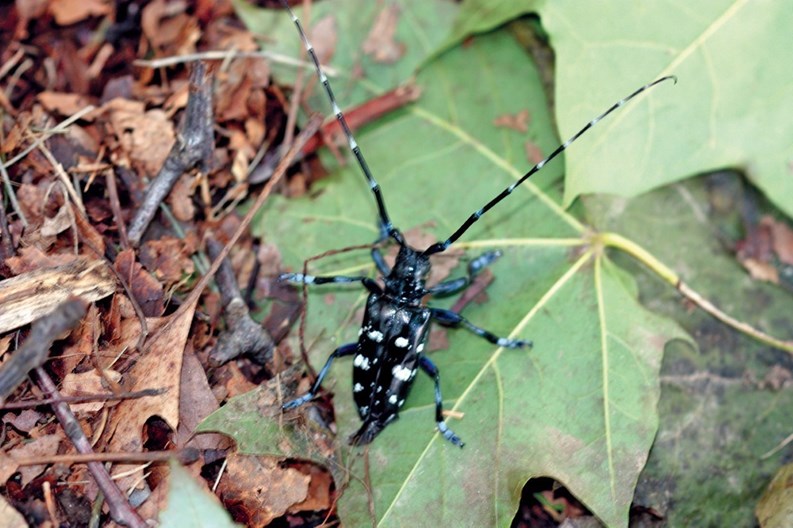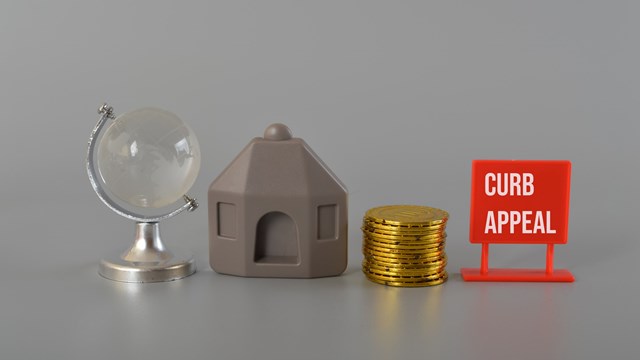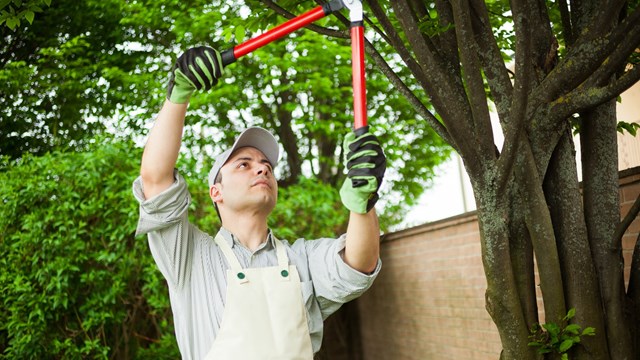In Worcester, Massachusetts, the north side of the city has been stripped of its shade trees, victims of a slow but persistent invader from China—the Asian longhorned beetle (ALB). The value that mature hardwoods provide in dense residential areas is more fully appreciated now that they’re gone. “My mother’s house is now more expensive to heat in winter and keep cool in summer, since the trees in her neighborhood were removed. Those trees used to shield cold winds in winter, and gave protection from the sun’s heat all summer,” states Geoff Ford, vice president of the pest division at Ford Hometown Service in Worcester.
The Asian Longhorned Beetle
The ALB has been big news in southern New England; pockets of invasion have also cropped up in other states, and in New York City. Since experts believe the beetle traveled here in wooden packing crates or pallets, other importers—anywhere in the United States —may have infestations that have yet to be discovered.
The beetles, which have no known predators in this country, bore holes in the host tree, eventually killing it. Since 2008, $50 million in federal and state money has been spent on eradication, and 25,000 infested trees in greater Worcester have been cut down.
Ford reports that the ALB had been spreading within the city’s Greendale neighborhood—the epicenter of New England’s infestation—for many years. “My company has a bug club,” he explains, “with a collection of live and mounted specimens… and we do educational presentations for schools and groups. We had a beetle no one recognized that was captured locally in our collection that turned out to be the ALB… and that was 11 years before the ‘official’ discovery.
“The U.S. Dept. of Agriculture has been involved locally,” says Ford, “and they have crews who are still working in this area, inspecting trees on a grid-by-grid basis.”
He describes other insect pests that are being seen with increasing frequency in the Northeast. “In the fall, you’ll get insects migrating indoors… looking to hibernate over the winter. One is the western conifer seed bug. They’ll seek warmth and get inside through the roof or trim line, around window and door frames. They wander around inside the walls or attic, in response to the weather or temperature, then they can get trapped inside [when spring comes]. People see them on walls or ceilings, and they’re just big and ugly, and if you squish them, they have a nasty odor, so sometimes they are called stinkbugs.”
The western conifer seed bug has been destructive to conifer forests in the northwest part of the country, where it originated and exists in greater volume. In New England, as an indoor pest, it’s more annoying than destructive. To eliminate them, experts recommend sealing or caulking up cracks and tiny spaces where they can enter. “The conifer seed bug has spread east, even to Europe… and they lay eggs on the needles of pines and spruce trees,” adds Ford.
He explains that his company does all kinds of pest control service, from wildlife removal to termites, bed bugs, and invaders of lawns and landscape foliage. “Even mosquitoes and ticks, we can eliminate these potentially disease-carrying pests from properties. We chemically treat the perimeter of properties, lawns and foliage for ticks. Even people who never walk in woods or fields get deer tick bites and Lyme disease. The ticks can be found walking on grass, and they’ll get on your shoe and make their way up and under your clothes.”
Moving North
A number of invasive insects that attack—and kill—trees are moving up from warmer climates and being discovered most frequently in southern New England. Biologists in the northern New England states are standing guard. David Struble, the state entomologist for the Maine Department of Agriculture, Conservation & Forestry, reports, “We handle a lot of calls… the public is vigilant” about watching out for problems and inspecting trees. “The woolly adelgid, for one, is building up slower than was first projected in the 1980s. This is a tiny bug that deposits white egg masses on Eastern hemlocks. It’s related to the aphid and tends to be windborne, sometimes carried by birds. The infestation is spotty and builds up slowly.” Really cold winters will keep it at bay, he adds, but with climate change and milder winters, “the adelgid has traveled up the Connecticut River Valley and has been found at the southern edges of Vermont, New Hampshire and Maine. Biologists are looking at bugs that feed on the adelgid, and other natural controls.”
One pest that has not yet been discovered in Maine is the emerald ash borer, notes Struble. “This pest has killed millions of ash trees in the Midwest. Similar in effect to the ALB, it bores into trees and feeds on the cambium layer, right under the outside bark, and it girdles the tree. This can kill a tree in a couple of years. The ash borer is mostly spreading artificially, like with the transport of cordwood. Between this bug and the ALB, the states of Maine and New Hampshire have a quarantine on bringing cordwood in from other states. We’re most concerned about infestation because forestry and forest products are a major industry in these states.”
In February, Massachusetts officials announced the establishment of a quarantine in Berkshire County in an attempt to stop the spread of the Emerald Ash Borer n that state. The move came after the EAB was detected in the town of Dalton in August, 2012. State and federal officials immediately started formulating a plan to deal with the insects, and set up more than 700 EAB traps across Masschusetts.
With funding from the US Forest Service, the Massachusetts Department of Conservation and Recreation also girdled 26 trees, a process known as “delimiting,” that stresses the individual trees in an attempt to attract and sequester any EAB in the area. Public education and a decision to enact a quarantine, which took effect March 1, 2013, followed.
The quarantine order means that certain products will be regulated from moving outside the regulated area, including all hardwood firewood (any piece of wood smaller than 48”), all ash nursery stock, and any ash lumber that has not been treated. Proper wood treatments include the removal of bark and half an inch of wood, dry kiln sterilization, fumigation, and heat treatments.
“The Emerald Ash Borer brings a very serious threat to our ash trees, and we are not taking its presence lightly,” said DCR Commissioner Ed Lambert. “We believe a county-wide quarantine will allow the best chance at slowing the spread of Emerald Ash Borer.”
In Maine, Struble notes, “There are all kinds of things spreading northward with climate change. We didn’t used to have opossums or turkey vultures or the tufted titmouse… and we now are seeing purple loosestrife,” which can choke out important native plants, especially in sensitive wetlands.
Struble admits that over the years, landscapers and homeowners inadvertently planted exotic shrubbery that is now being removed. “Fifty years ago,” he states, “we planted a lot of Russian olive because wildlife and birds liked the berries… also barberry and honeysuckle. But we’ve found that these species will take over and prevent the growth of anything else.”
Maine has even banned koi fish, he points out, which are now only allowed with a permit. Koi are the colorful Asian carp known as goldfish, used in aquariums and garden pools. Carp and other invasive fish can potentially upset an entire ecosystem. Sport fishing is reported to bring revenues of $300 million per year into the state, and fisheries struggle to maintain landlocked salmon and wild brook trout, which get edged out by certain bass and other fish from outside the state. Trout Unlimited, a private conservation group, released a study last year that declared Maine to be “the last true stronghold for brook trout in the eastern United States.”
The Downside of Mild Winters
Joseph Davis is the arborist representative for Bartlett Tree Experts in Hooksett, New Hampshire. “The major threat right now,” he offers, “is the woolly adelgid. It has been in southern New England for at least 20 years, probably more. It’s been on the seacoast of New Hampshire for ten years and it’s moving inland. We manage dozens of towns in New Hampshire and the adelgid has infected a lot of them.
“The insect is adapting itself to our colder climate… It was discovered in the southeastern U.S. over 30 years ago. We saw an explosion in the population last spring because of the mild winter last year… If we had some cold stretches of temperature it would reduce the population.
“You can detect it on the base of needles on a hemlock: It looks like a series of tiny [fraction of an inch], white cotton balls all in a line—you’re looking at the egg sacks. If you see single white balls, it’s probably a spider egg and not adelgid. Any part of the tree can be infested, anywhere there are needles,” Davis says.
“The adelgid is a tiny, sucking insect… It’s a crawler, and gets around carried by the wind or spread by birds,” Davis continues. “It sucks the nutrients from the tree and also injects a toxin. Left untreated, and with mild winters, it can kill a mature tree in three years.”
He also is watching out for the emerald ash borer, noting that if “left untreated, it will kill a tree in two or three years.”
Property managers and landscape technicians do not need to lose trees to these invaders, Davis contends. As with any destructive pest, he says, “We use ‘integrated pest management’ techniques, and consider every case individually. The treatment depends on the level of infestation, the location… and timing is very crucial,” he states, to account for the life cycle of the pest, which can produce surprises when the climate changes. For instance, he adds, “In New England, the adelgid has a crawler stage in late winter, when they can get a ‘leg up’ on your effort to control them.”
To begin a treatment plan, Davis explains, “We take soil samples to see what the tree needs. As an example, we had a client in Manchester with infected hemlocks, and we injected a type of insecticide into the soil, so it works through the roots. Other situations may involve spraying the foliage, and in some cases we do both.”
Every situation is different and needs a custom tailored approach, he insists, so “calling in a professional arborist is essential. The products that we use have changed so much over the years, and you need licensing to purchase and apply these chemicals.”
Seasonal inspections should reveal any kind of declining health in landscape trees, including borings or woolly egg sacks. “Early detection is the key,” Davis adds, for anyone with an investment in native, specimen trees or woodland management.
Marie Auger is a Massachusetts freelance writer and a frequent contributor to New England Condominium.







Leave a Comment